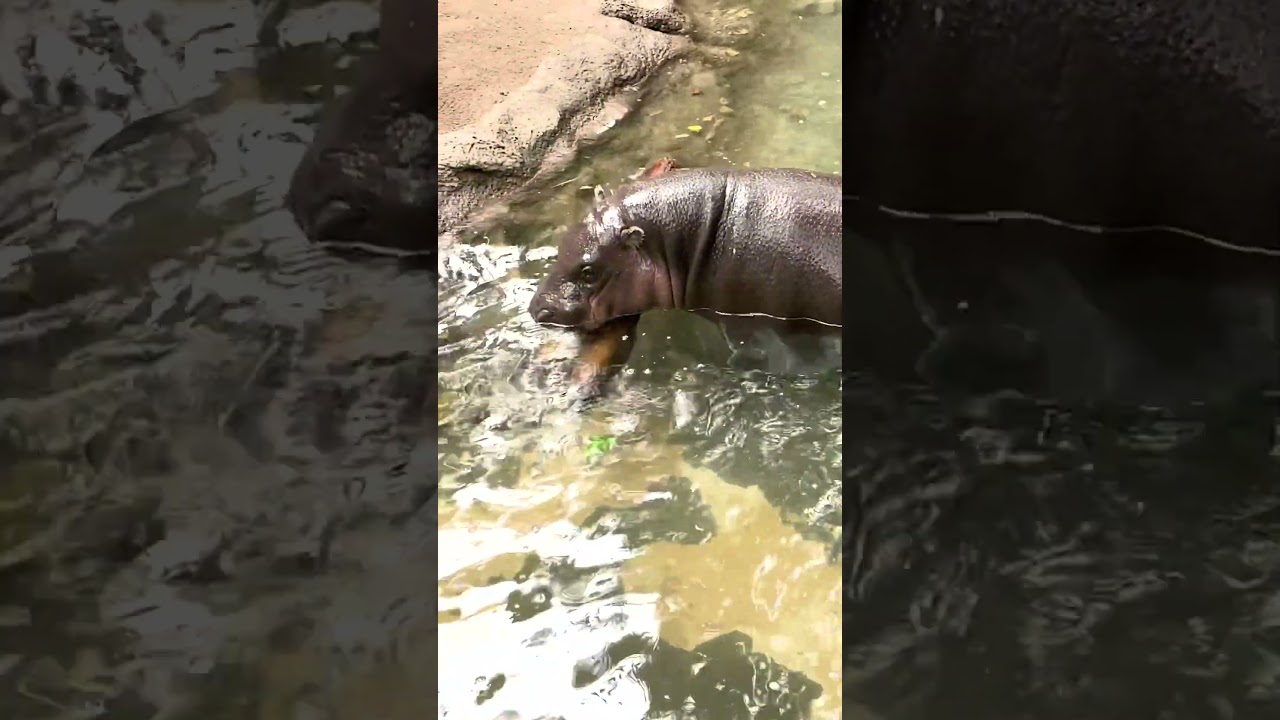- Understanding the unique biology and habitat of the pygmy hippo, with a focus on Inocencio as a case study in zoo management.
- The role of the Branch Manager at zoological institutions, highlighting Inocencio’s impact on wildlife conservation efforts.
- The significance of captive breeding programs and their role in the preservation of the pygmy hippo species.
- The ethical considerations and challenges of managing a zoological exhibit focused on rare and endangered species like the pygmy hippo.
- Community education and outreach efforts using zoological exhibits like Inocencio’s to raise awareness about species conservation.
The pygmy hippo (Choeropsis liberiensis), a lesser-known relative of the common hippopotamus, inhabits the dense forests and swamps of West Africa. Much smaller than its famous cousin, the pygmy hippo, typically weighing between 400 and 600 pounds, thrives in moist environments where it leads a largely solitary life. Scientifically, the species offers intriguing insights into the evolutionary diversification of hippos. With adult pygmy hippos standing about 2.5 feet tall at the shoulder, their reclusive nature and specialized habitats have contributed to their status as one of the lesser understood species in the animal kingdom.
Inocencio, the pygmy hippo, serves not only as a branch manager in a zoo setting but as an ambassador for wildlife conservation. His existence in a managed zoo environment highlights both the ecological intricacies of his species and the vital role zoos play in conservation efforts. By carefully studying and managing Inocencio’s environment, zoologists gain valuable data on the pygmy hippo’s habits, needs, and developmental biology. This knowledge is pivotal in shaping future conservation strategies both in situ (in the wild) and ex situ (in captivity).
The function of a Branch Manager in zoological settings typically includes overseeing the welfare and daily activities of animal exhibits. Inocencio’s role transcends standard practices, underscoring his impact within the zoo where he leads an outreach initiative aimed at raising awareness of conservation issues. By serving as a tangible connection between the general public and the pressing issue of wildlife conservation, Inocencio aids in educating visitors about the ecological importance of species conservation. This position extends into conservation advocacy, where initiatives driven by Inocencio’s "position" within the zoo influence public policy and drive community involvement.
Captive breeding programs are a cornerstone in the preservation of endangered species like the pygmy hippo. Zoos worldwide have made significant strides in breeding pygmy hippos, with the aim of bolstering their numbers and genetic diversity. These programs are scientifically designed to mimic the natural breeding behaviors of hippos, thus preserving essential genetic traits. Inocencio is a prime example of how strategic breeding programs contribute to the larger goal of species preservation, adding to the broader knowledge pool that helps guide future conservation planning. Zoos act as genetic reservoirs for species that are rapidly declining in their natural habitats, and Inocencio’s participation in such programs embodies the effective fusion of scientific research and practical animal management.
Managing a zoo exhibit that focuses on underrepresented animals like the pygmy hippo involves ethical considerations, particularly regarding animal welfare and public education. The presence of Inocencio and his companions requires that zoos balance the imperative of visitor engagement with the need to provide a stress-free and enriching environment. Proper enclosure design, enrichment opportunities, and healthcare are critical components of ethical management that respect the intrinsic needs of these animals. Zoos, using Inocencio’s exhibit as a model, continually review and innovate care practices to enhance the lives of the creatures they harbor, reflecting a commitment to ethical stewardship that extends beyond the gates of the zoo.
Community education and outreach are integral to raising public consciousness about wildlife conservation. Inocencio’s story and presence become tools for narrative building and advocacy. Through engaging and educational exhibits, zoos reach local schools and community groups, fostering curiosity about the broader implications of losing species like the pygmy hippo. By leveraging Inocencio’s charismatic and engaging presence, zoological institutions inspire future generations to appreciate and contribute to biodiversity conservation. Workshops, educational talks, and interactive exhibits amplify the message of conservation, leveraging Inocencio’s role to encourage active stewardship within the community.
In combination, these factors illustrate the comprehensive role that a single animal like Inocencio the pygmy hippo plays in the broader scheme of zoo management and wildlife conservation. Zoos, in partnership with conservationists worldwide, continue to enhance strategies that promote biodiversity. In this context, the pygmy hippo is not just an exhibit but a keystone in the mission to sustain wildlife populations in their natural environments. As such, Inocencio embodies the critical intersection of education, conservation, and ethical animal management that defines modern zoological science. Through the presence and well-being of animals like Inocencio, zoos can create ripples of change that extend beyond their immediate environments, pushing boundaries in species preservation and public engagement.
*****
Source Description
Franklin Park Zoo guests can often observe our pygmy hippos, like Ino here, wading in their pools. The animal care team sometimes floats greens and leaves for them to graze on throughout the day. A bobbing log may also provide some tasty leaves along with a bit of enrichment in their environment. #hippo #pygmyhippo #franklinparkzoo
Video: Keeper Natalie


